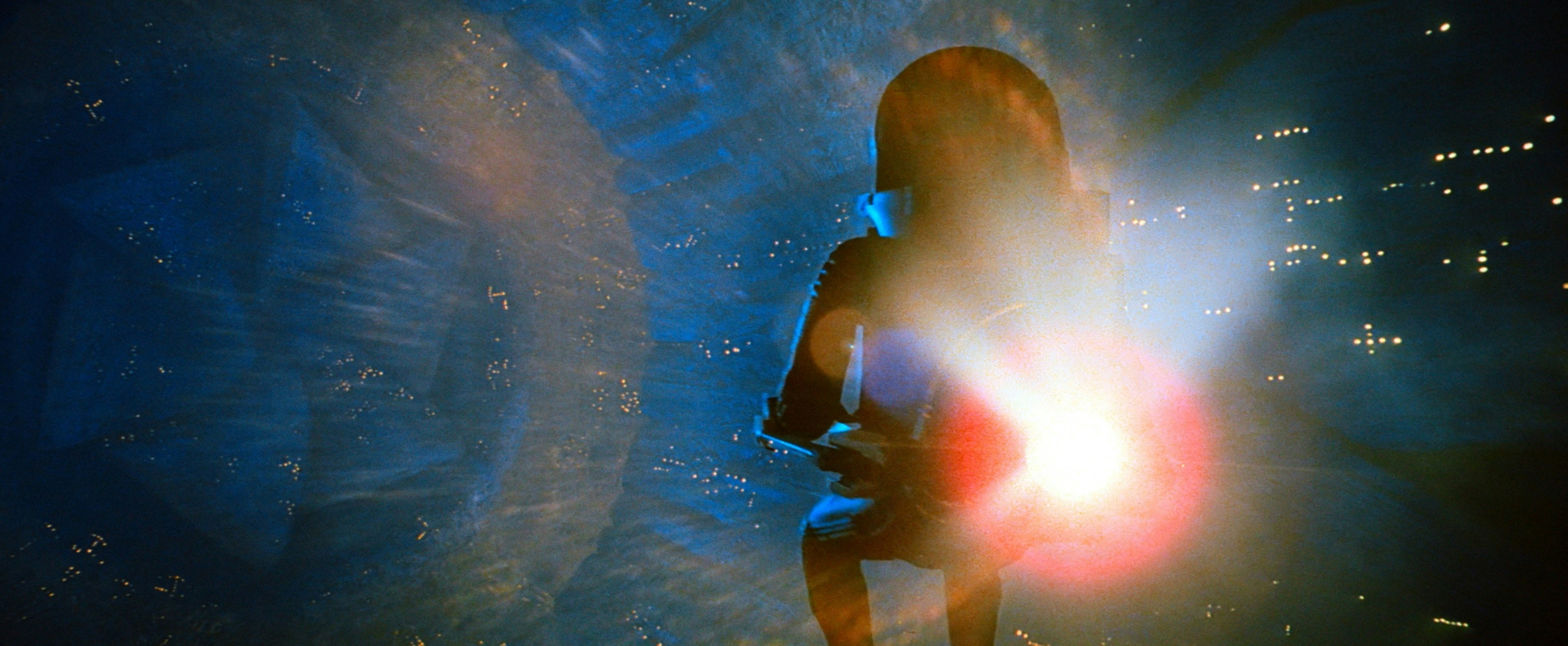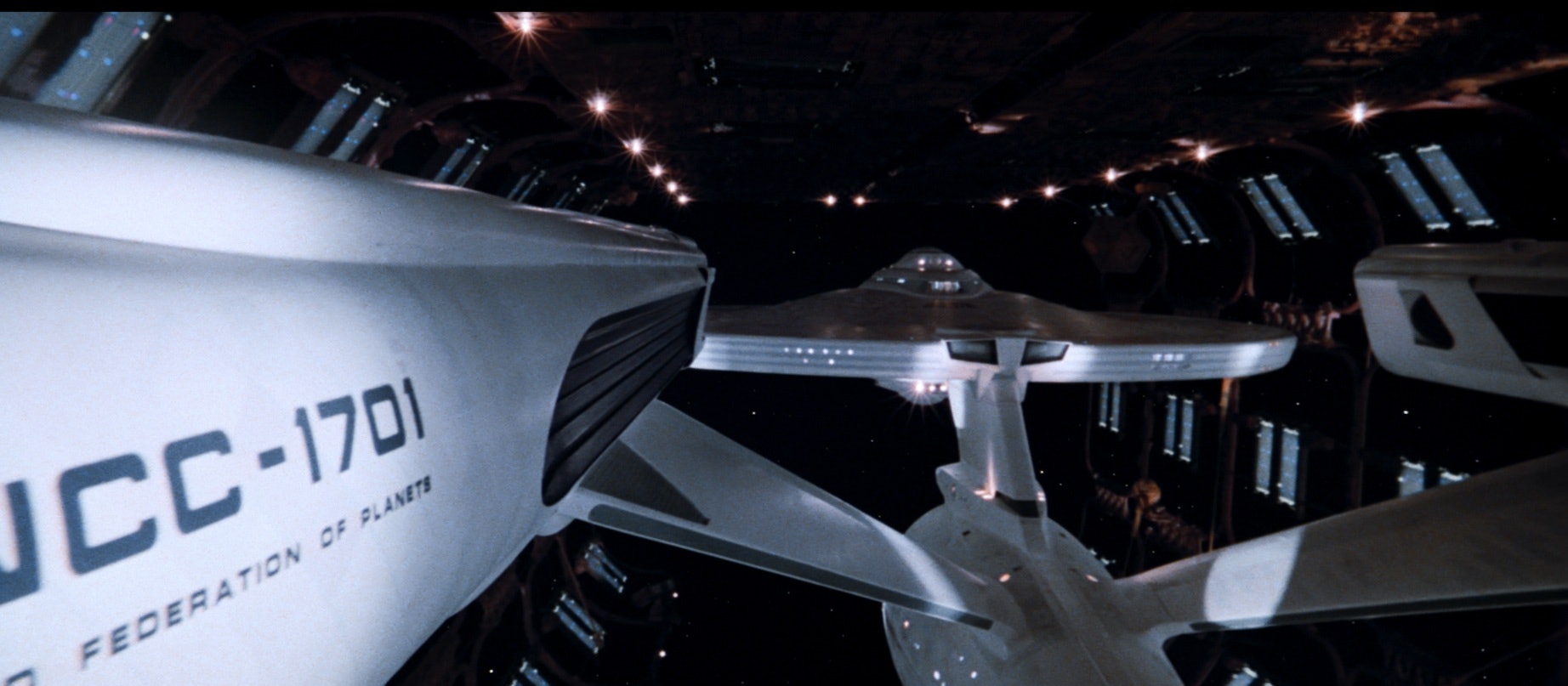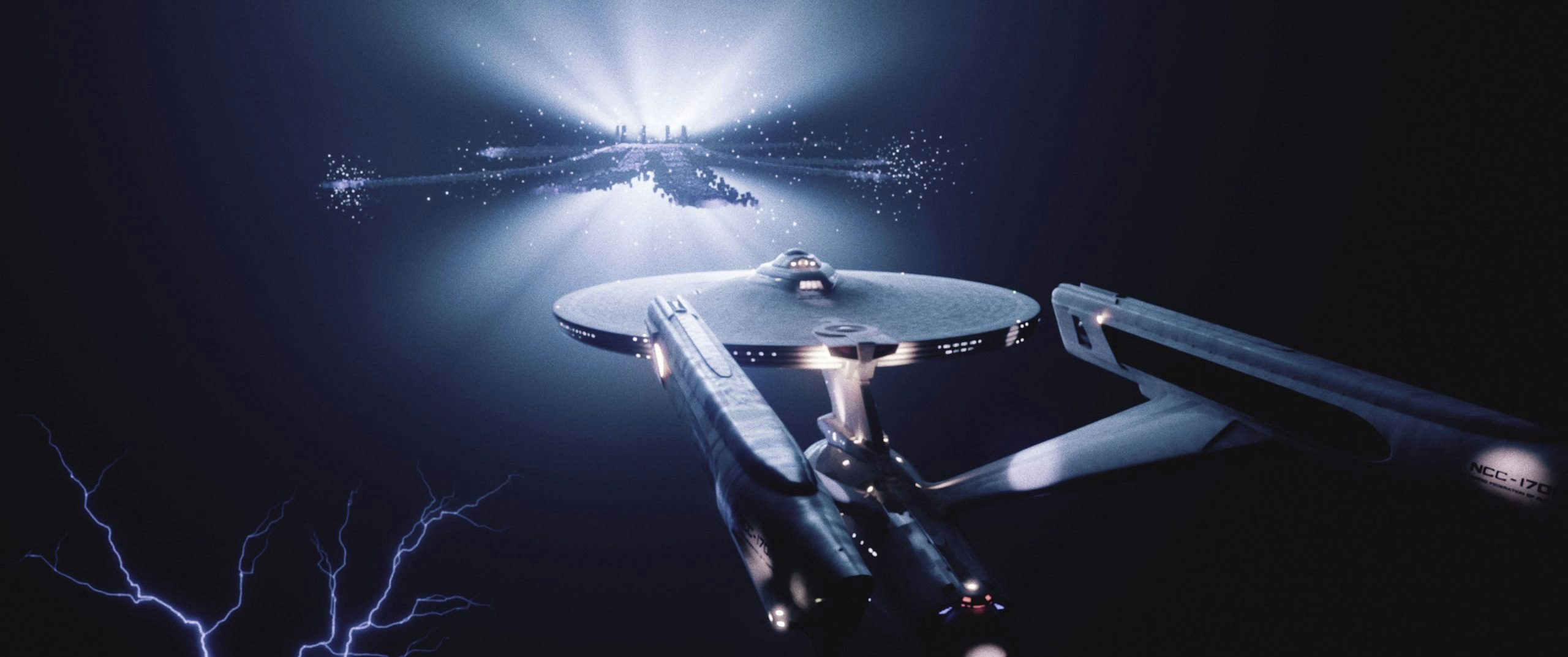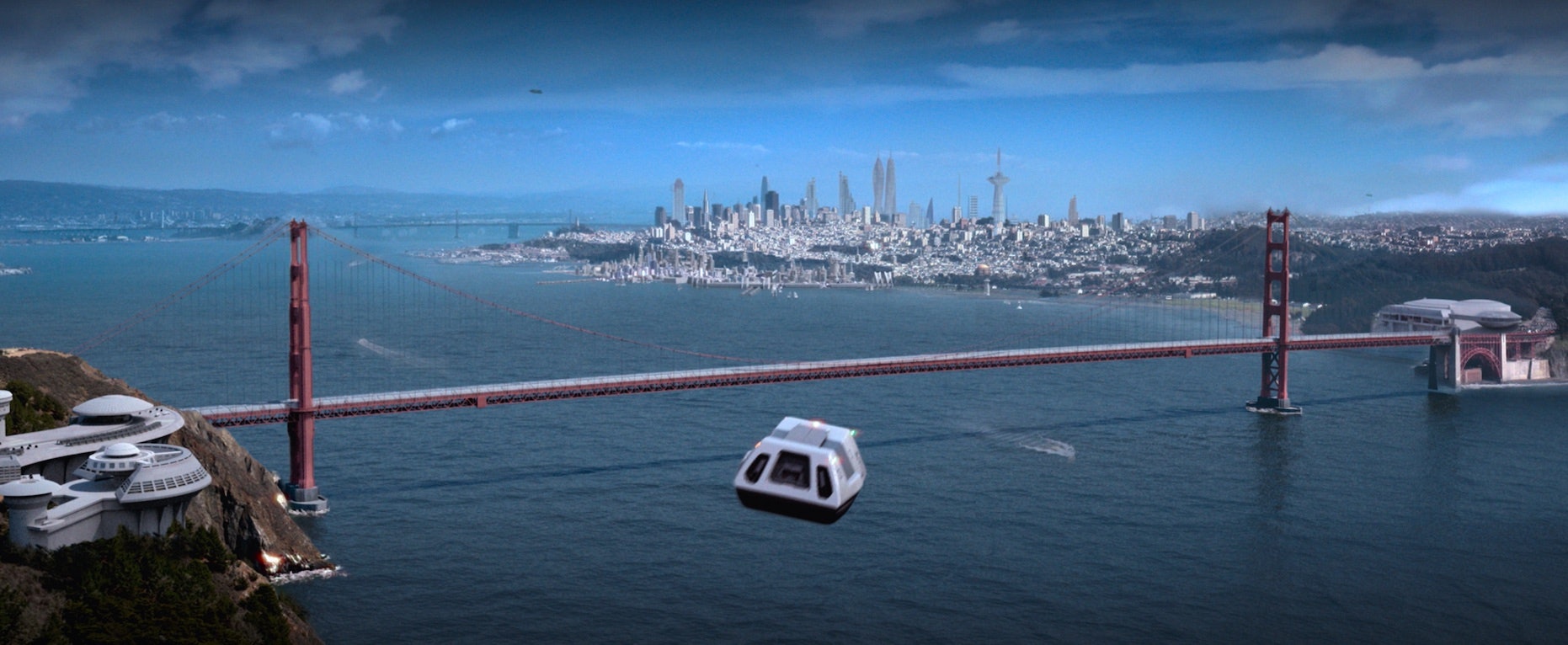
The human adventure is just beginning. At the end of Star Trek: The Motion Picture (1979), these words appeared on screen in plain white text. In the most recent 4K director’s edition, those words are in golden text. Believe it or not, this is one of the more radical changes made to the first theatrical Star Trek film.
Here’s why the beautiful new 4K restoration of this Trek film takes a subtle approach to updating an older sci-fi movie. And how it course corrects a trend established by the infamous Star Wars special editions.
Star Trek: The Motion Picture: Director’s Edition

On April 5, 2022, the new 4K restoration of Star Trek: The Motion Picture: Director’s Edition debuted on Paramount+. Overseen by David Fein, Daren Dochterman, and Mike Matessino, this cut of the film is, essentially, a spruced-up version of a previously released “director’s edition” from the year 2001. Back then, director Robert Wise was still alive and approved a few of the movie’s bigger changes, which, for the most part, are very minor.
In other words, just like there have been multiple “Special Editions” of the 1977 Star Wars or the 1982 Blade Runner, this isn’t the first time Star Trek: The Motion Picture has been re-released. In 1983, a “Special Longer Versions” of the film hit VHS, which notoriously spliced in footage from one of the film’s deleted scenes, creating a continuity error in which Kirk is wearing two radically different spacesuits just seconds apart.
Neither the 2001 nor the new 2022 Director’s Edition have these kinds of problems, but that doesn’t mean Star Trek: The Motion Picture is a perfect movie. Whether it's 1979, 1983, 2001, or 2022, the film is still a fairly humorless, slow-paced, and derivative of a pre-existing TOS episode, “The Changeling.” These days, homages and Easter eggs in Trek feel normal, considering there’s so much material to work with. But in 1979, there had only been 79 episodes of TOS. Why the eventual shooting story was, in essence, the same story that The Original Series had already told is still baffling.
Of course, there are various explanations for why The Motion Picture was written and filmed the way it was, and those accounts have filled several books, including Return to Tomorrow by Preston Neal Jones, The First Star Trek Movie by Sherilyn Connelly, The Making of Star Trek: The Motion Picture by Gene Roddenberry and Susan Sackett, Chekov’s Enterprise by Walter Koenig.
tl;dr: Nearly the entirety of the 1970s were filled with attempts to get a Star Trek film made, which, at one point, resulted in a new Star Trek TV series entering pre-production, and that failed TV show eventually resulted in The Motion Picture.
A classic science fiction film

But the power of The Motion Picture has almost nothing to do with its story or the behind-the-scenes machinations. Like much of what is powerful about Star Trek, the subtext matters more than the context. Even with its flaws, there’s no denying this is a classic science fiction film. And it’s also obvious the film made history in many significant ways: It was the first major motion picture based upon a TV series, it was the first mainstream science fiction film to use the word “wormhole,” and it was the first feature film in what would become the ever-expanding Star Trek media franchise. Released on December 6, 1979, The Motion Picture was the literal last word in the sci-fi cinema of the 1970s, a bold and thoughtful film that has proven itself more timeless than some of its peers, most notably, the 1977 version of Star Wars.
From a purely superficial standpoint, what makes the new 4K Director’s Edition so shocking is how well the visual effects and overall design of the film hold up to contemporary scrutiny. The Star Trek franchise wouldn’t begin using Lucasfilm’s Industrial Light and Magic until Wrath of Khan in 1982, meaning the effects and production design of TMP came from a combination of talents including Doug Trumball, Alex Weldon, Robert Abel, and legendary model and prop-maker Brick Price, credited on screen for the first time in this 2022 edition.
There are a lot of behind-the-scenes reasons why The Motion Picture had so many cooks in the VFX kitchen, most of which are detailed in Jeff Bond’s amazing 2020 book, Star Trek: The Motion Picture: The Art and Visual Effects, but the result is clear: From the redesigned USS Enterprise to the mysterious V’Ger cloud to the massive sets and, of course, Spock’s ultra-memorable space-walk scene, the way The Motion Picture looked in 1979 was an achievement in a specific type of science fiction cinema which, can only be called epic. Arguably, it hasn’t been replicated, and seeing it in 4K only proves how amazing it looked the first time around.
What the Star Trek: The Motion Picture: Director’s Edition changes

So, what did the new 4K version change? Essentially, everything about the original cut of the film simply looks crisper and clearer. Some of the sounds have been remixed for clarity, most notably, the trippy “wormhole” scene. A few new VFX shots have been either added or cleaned up, specifically when Admiral Kirk arrives at Starfleet Command toward the beginning of the film. And yes, the font for the opening and closing credits is gold now, not white.
But the result is pretty much the exact opposite of watching any of the various “Special Editions” of Star Wars: A New Hope. Although the enhanced DeathStar battle in the Special Edition of Star Wars is, admittedly, great, The Motion Picture didn’t actually need to do anything radical like that. Starship shots have not been replaced with new angels, and the meaning of each scene has not been changed. There is no “maclunkey” moment in the Director’s Edition for The Motion Picture. There are no distracting CGI characters. The movie is simply the movie, just way better looking.
Because The Motion Picture is arguably the most beautiful Star Trek film of them all, this means this restoration doesn’t feel silly or gimmicky. This is Star Trek as it was in 1979, which, watching it now, feels shockingly brand new.
Star Trek: The Motion Picture: The Director’s Edition is streaming now on Paramount+.








